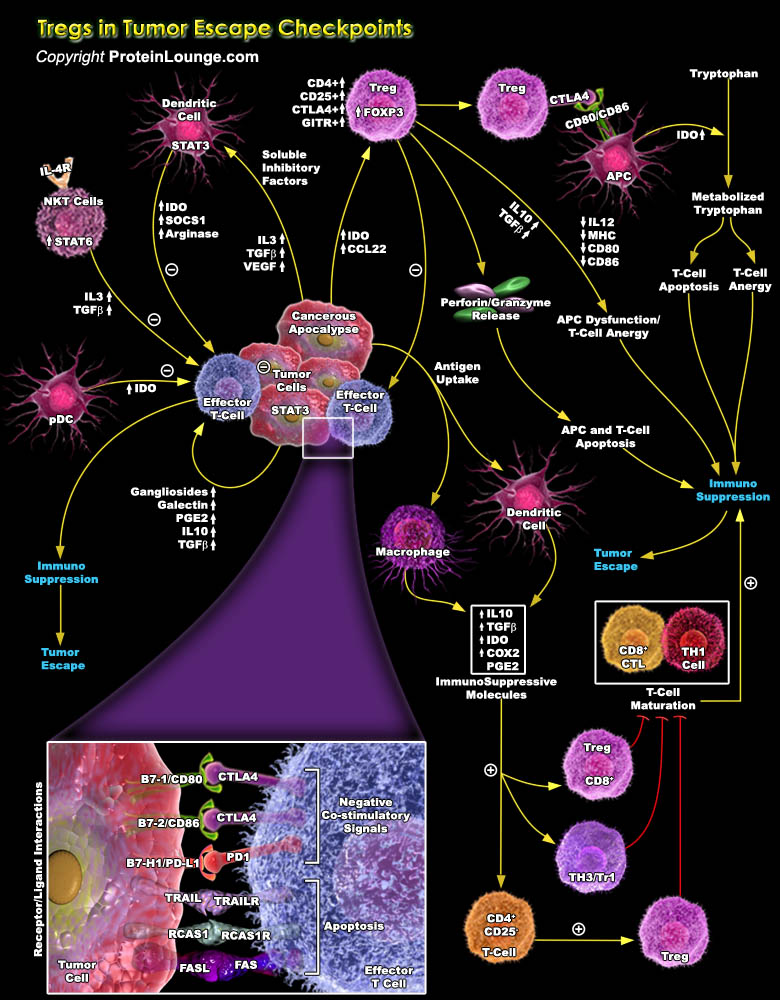
Specific T cell populations have suppressive/regulatory cells known as Regulatory T-cell or Tregs (Previously known as suppressor T-cell). Among them CD4+ regulatory T cells (Tregs) basically has two different subsets Tr1 and Th3 cells which are differentiated by their distinct suppressive mechanisms. The thymus-derived Tregs or natural Tregs (nTregs) express CD4 and high CD25 with FOXP3 (Forkhead Box-P3) to be a key regulatory gene. Apart from these, other markers of Treg include CTLA4 (Cytotoxic T-Lymphocyte-Associated protein-4), GITR (Glucocorticoid-Induced TNFR-Related protein) and LAG-3 (Lymphocyte Activation Gene-3). Treg cells are implicated in the development of autoimmunity, allergy and rejection of organ transplants, as well as the suppression of immune[..]
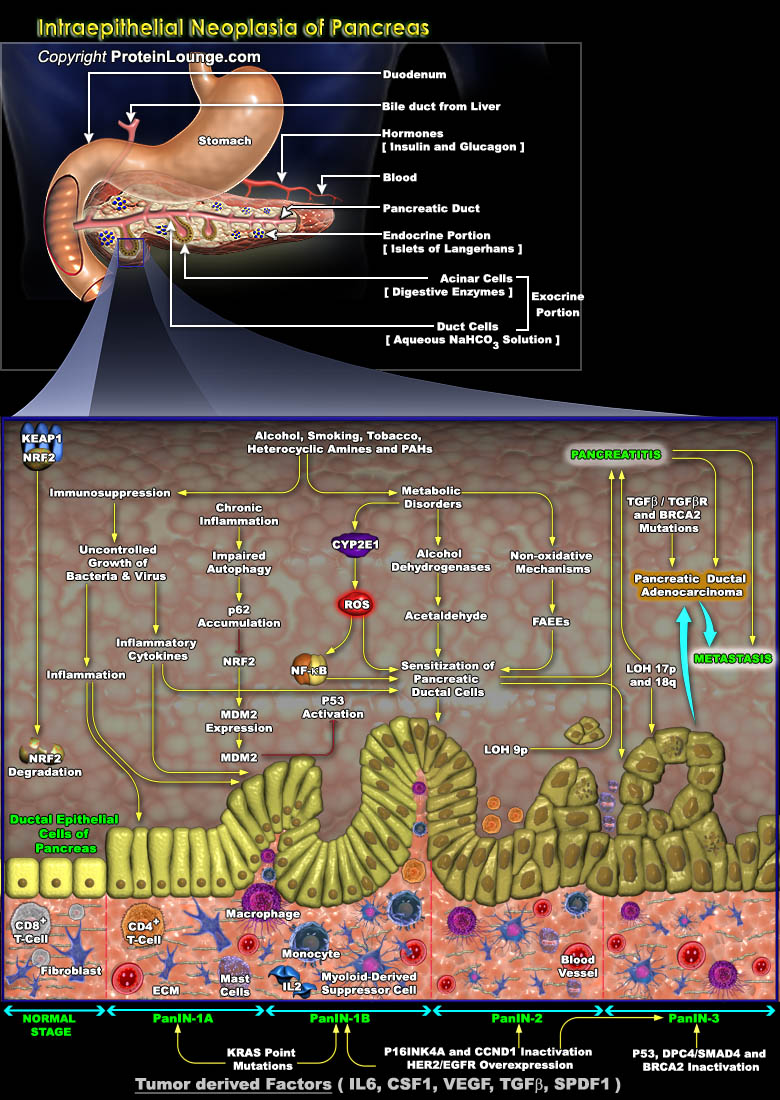
Pancreatic ductal adenocarcinoma is the most common pancreatic neoplasm and as its name suggests it arises from ductal epithelial cells of the pancreas. Other subtypes of pancreatic neoplasms include benign and malignant cystic lesions, mucin producing tumor, acinar cell carcinoma, adenosquamous carcinoma, lymphomas and sarcomas. Pancreatic ductal adenocarcinoma evolves from a progressive cascade of cellular, morphological and architectural changes from normal ductal epithelium through preneoplastic lesions termed PanIN (Pancreatic Intraepithelial Neoplasia). These PanIN lesions are in turn associated with somatic alterations in canonical oncogenes and tumor suppressor genes. The molecular pathogenesis of human pancreatic ductal adenocarcinoma involves the temporal and[..]
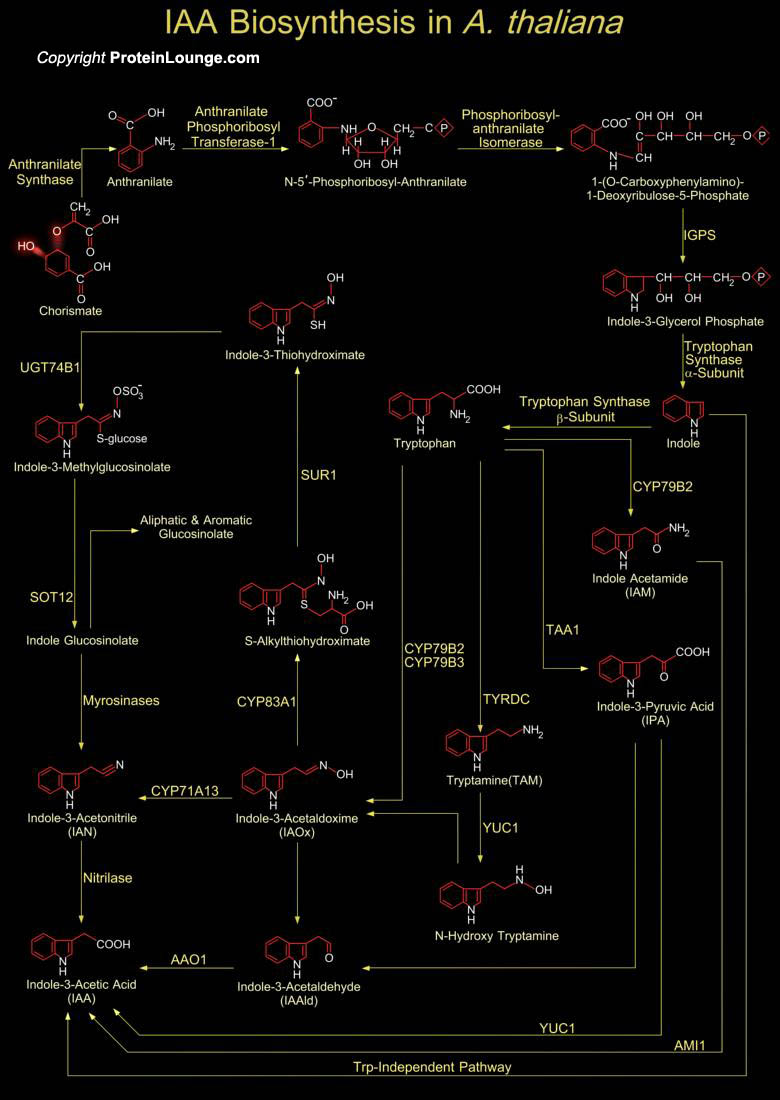
Auxin is a classic Phytohormone involved in a myriad of Developmental and Environmental Processes like Embryo Patterning, Cell Division and Elongation, Vascular Differentiation, Lateral Root Initiation, Gravitropism, and Phototropism. IAA (Indole-3-Acetic Acid) is recognized as the key Auxin in most plants with over 20 members of IAA gene family has been recognized in Arabidopsis. IAA physiologically exists as free acid but IAA can also be found in different conjugated forms, including Ester-types with the Carboxyl group linked via Oxygen to a Sugar (for example Glucose) and Amide-types with the Carboxyl group forming an Amide (Peptide bond) to Amino Acids or Polypeptides. Plants use several pathways to synthesize IAA but none of the pathways is yet defined to[..]
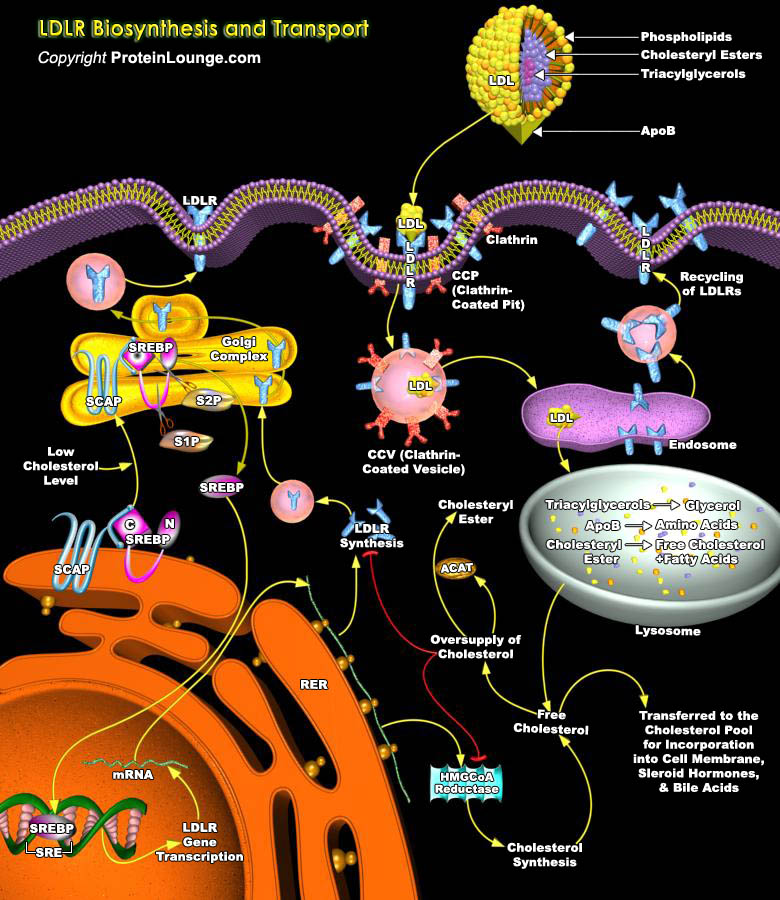
Cholesterol is an important component of cell membrane, and a precursor of Steroid hormones, vitamin D3, and Biliairy Acids. Cell Cholesterol homeostasis is under the control of endogenous Cholesterol synthesis, Cholesterol secretion, and of Lipoprotein Receptor activities that enrich the cell in Cholesterol. Lipoprotein Receptors play an important role in Lipoprotein metabolism and in Cellular Cholesterol homeostasis. LDLs (Low Density Lipoproteins) are the major carriers of Cholesterol as CE (Cholesteryl Esters) in humans. Elevated LDL Cholesterol (>130-160 mg/dl) is one of the major risk factors for CHD (Coronary Heart Disease). For every 1% increase in LDL-Cholesterol, the risk for CHD is increased by 1%-2%. Furthermore, reduction of LDL-Cholesterol[..]

Retinoic Acid, the active form of Vitamin-A (all-trans-Retinol), is a lipophilic molecule, and is known to affect gene transcription. Retinoic Acid is made available in the body through dietary intake and subsequent metabolism in the liver. Vitamin-A is secreted from its storage pools and circulates in blood. In the liver Vitamin-A is converted to all-trans-Retinoic acid, the Carboxylic Acid form of Vitamin-A and diffuses easily to the target tissues through cellular membranes; gets bound to CRABP (Cellular Retinoic Acid Binding Protein) and produces its biological effects through the activation of RARs (Retinoic Acid Receptors). Although biologically active ligands for the RARs also include 9-cis-Retinoic Acid among others, yet circulating levels of 9-cis-Retinoic[..]
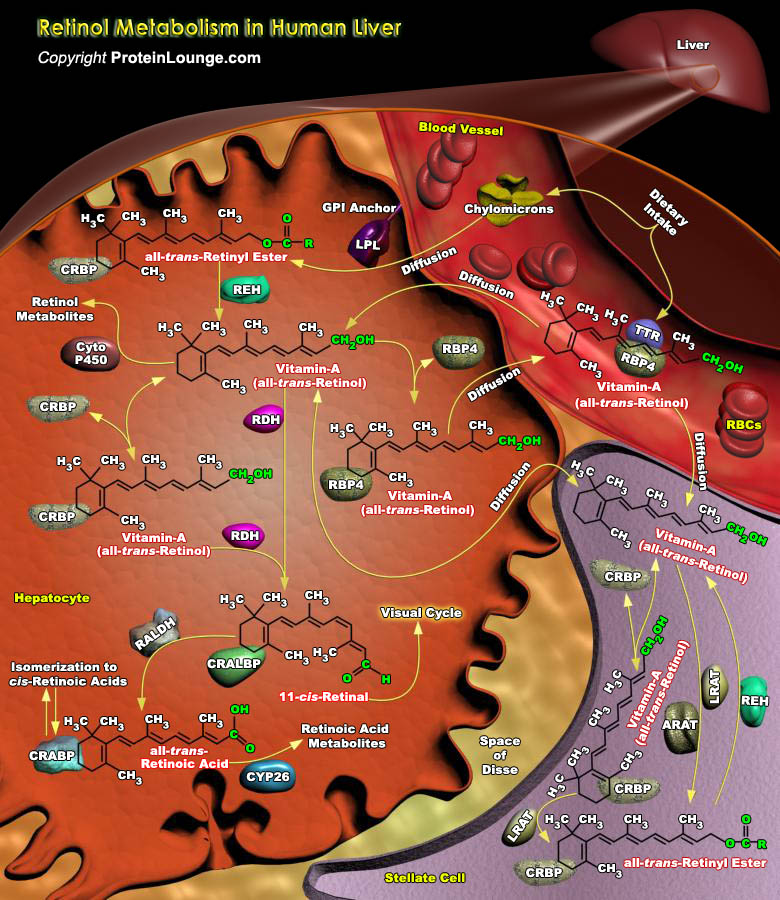
Vitamin-A (all-trans-Retinol), one of the essential micronutrient in the human is obtained chiefly in form of Retinyl Esters from meat, and Carotenoids, such as Beta-Carotene, from plant tissue. Beta-carotene and other Carotenoids are converted by the body into Retinol and are referred to as Provitamin-A Carotenoids. Hundreds of different Carotenoids are synthesized by plants, but only about 10 percent of them are Provitamin-A Carotenoids (Ref.1). The main site for synthesis and storage of Vitamin-A is in the liver. The pRBPs (Plasma Retinol-Binding Proteins) and Ttr (Transthyretin) facilitate the transfer of insoluble Vitamin-A between tissues, principally from storage sites in the liver to peripheral tissues. In the absence of pRBPs and Ttr the supply of Vitamin-A to[..]
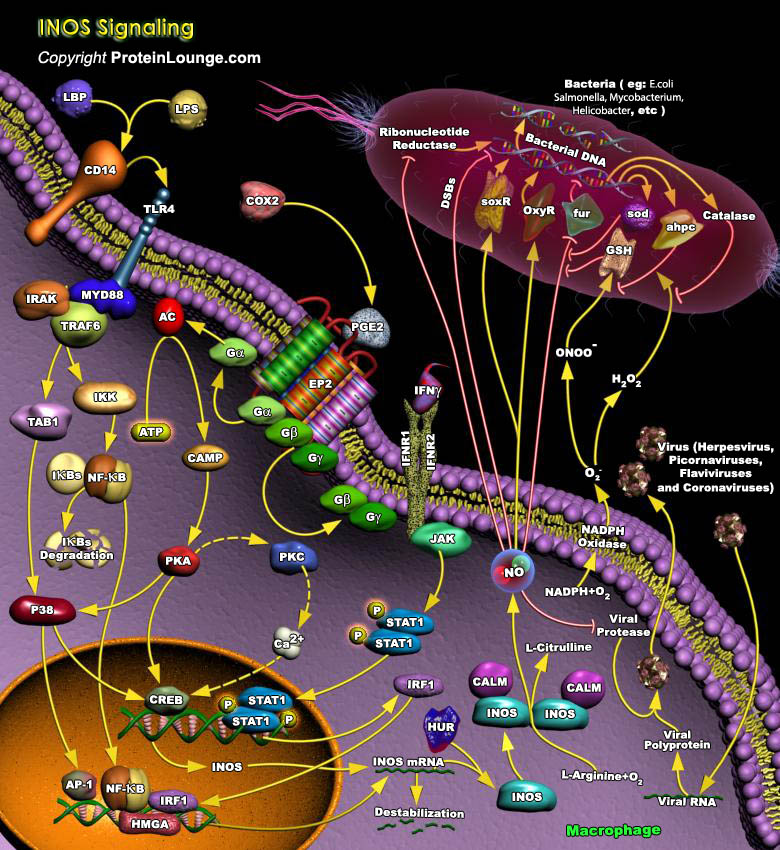
Microorganisms have developed several mechanisms to survive in their hosts' environments. These include competition with their hosts for metal acquisition and resistance to host defenses such as NO (Nitric Oxide), a cytotoxic weapon generated by macrophages. In eukaryotic cells, NO is metabolically produced by NOS (NO Synthase) from L-Arginine, O2 (Molecular Oxygen), and NADPH (Nicotinamide Adenine Dinucleotide, Reduced). In macrophages, an inducible NO synthase (iNOS or NOS2) is produced after activation by endotoxins or cytokines and generates copious amounts of NO presumably to help kill or inhibit the growth of invading microorganisms or neoplastic tissue. Although iNOS was originally identified and characterized in macrophages, it is present in numerous cell[..]
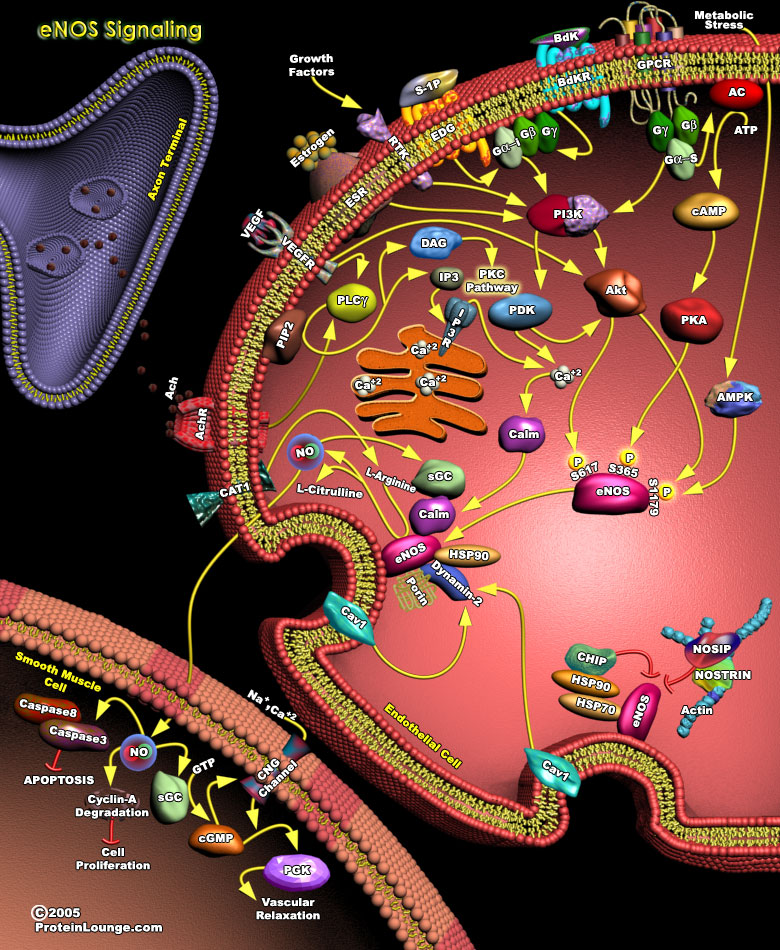
NO (Nitric Oxide) is a short-lived free radical gas involved in diverse physiological and pathological processes. It is produced along with L-Citrulline by the oxidation of L-Arginine and catalyzed by three different isoforms of NOS (NO Synthase). Type-I nNOS (neuronal NOS) and Type-III eNOS (endothelial NOS) are constitutively expressed as latent enzymes and require a higher concentration of Ca2+ for the enzyme activity. In contrast, Type-II iNOS (inducible NOS) is Ca2+ independent because it’s high affinity for Ca2+/Calm (Calmodulin) renders the enzyme active even at basal levels of intracellular Ca2+ . The catalysis of this reaction requires a number of essential cofactors such as mononucleotide, FAD (Flavin Adenine Dinucleotide), and NADPH (Nicotinamide Adenine[..]
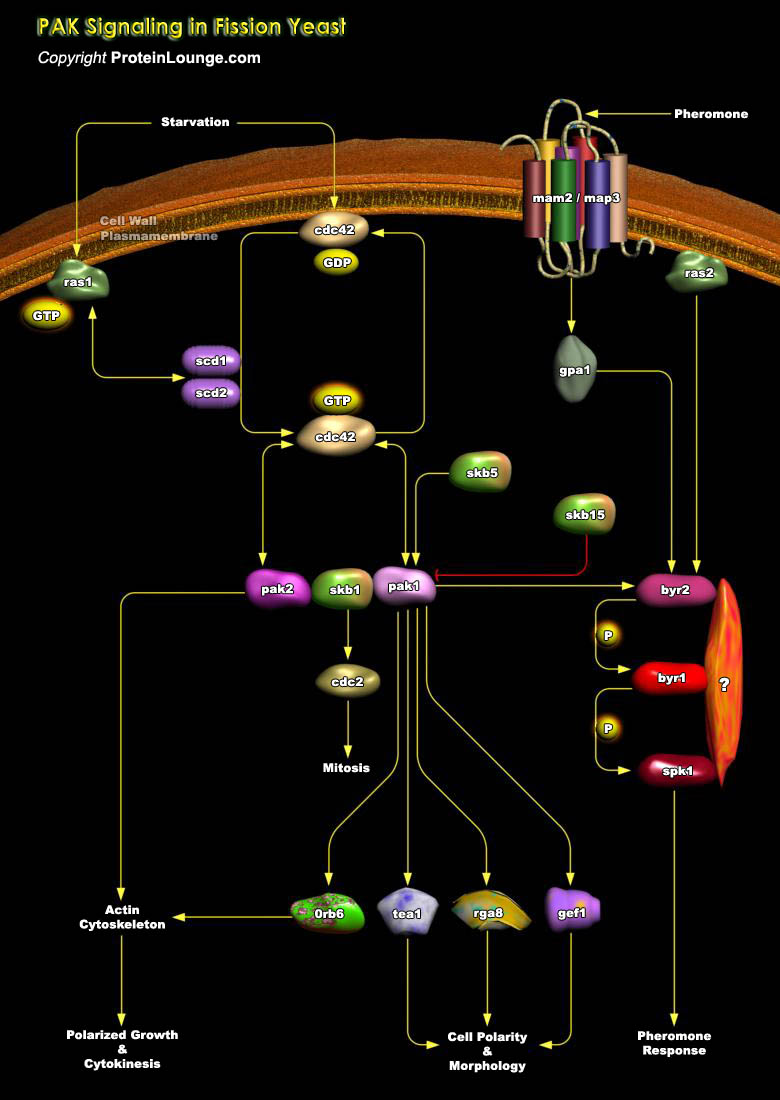
Simple eukaryotes such as yeasts and molds encode multiple PAKs (p21-Activated Kinases) that, like their orthologs in other systems, act downstream of Rho-family GTPases. All PAKs contain an N-terminal PBD (p21 GTPase-Binding-Domain), which confers binding to small GTPases such as CDC42 (Cell Division Cycle-42) or Rac, and a C-terminal protein kinase domain, but they do not bind to Rho, Ras, or other small G-proteins. CDC42 and Rac bind in a GTP-dependent fashion to a highly conserved sequence, referred to as the CRIB (CDC42 and Rac Interactive Binding) domain, found in the N-terminal regulatory domains of all characterized PAKs (Ref.1).The fission yeast Schizosaccharomyces pombe encodes two PAK kinases–Pak1/Shk1 and Pak2/Shk2–both of which, like their[..]
-Mediated Signaling.jpg)
Axon regeneration is arrested in the injured CNS (Central Nervous System) by axon growth-inhibitory ligands expressed in oligodendrocytes/myelin and reactive astrocytes in the lesion and by fibroblasts in scar tissue. Growth cone receptors bind inhibitory ligands, activating a Rho-family GTPase intracellular signaling pathway that disrupts the actin cytoskeleton inducing growth cone collapse/repulsion. The known inhibitory ligands include Eph (Ephrins) expressed on astrocyte/fibroblast membranes; the myelin/oligodendrocyte-derived growth inhibitors Nogo, MAG (Myelin-Associated Glycoprotein), and OMGP (Oligodendrocyte Myelin Glycoprotein); and membrane-bound Sema (Semaphorins) produced by meningeal fibroblasts invading the scar (Ref.1).Myelin-associated inhibitory[..]
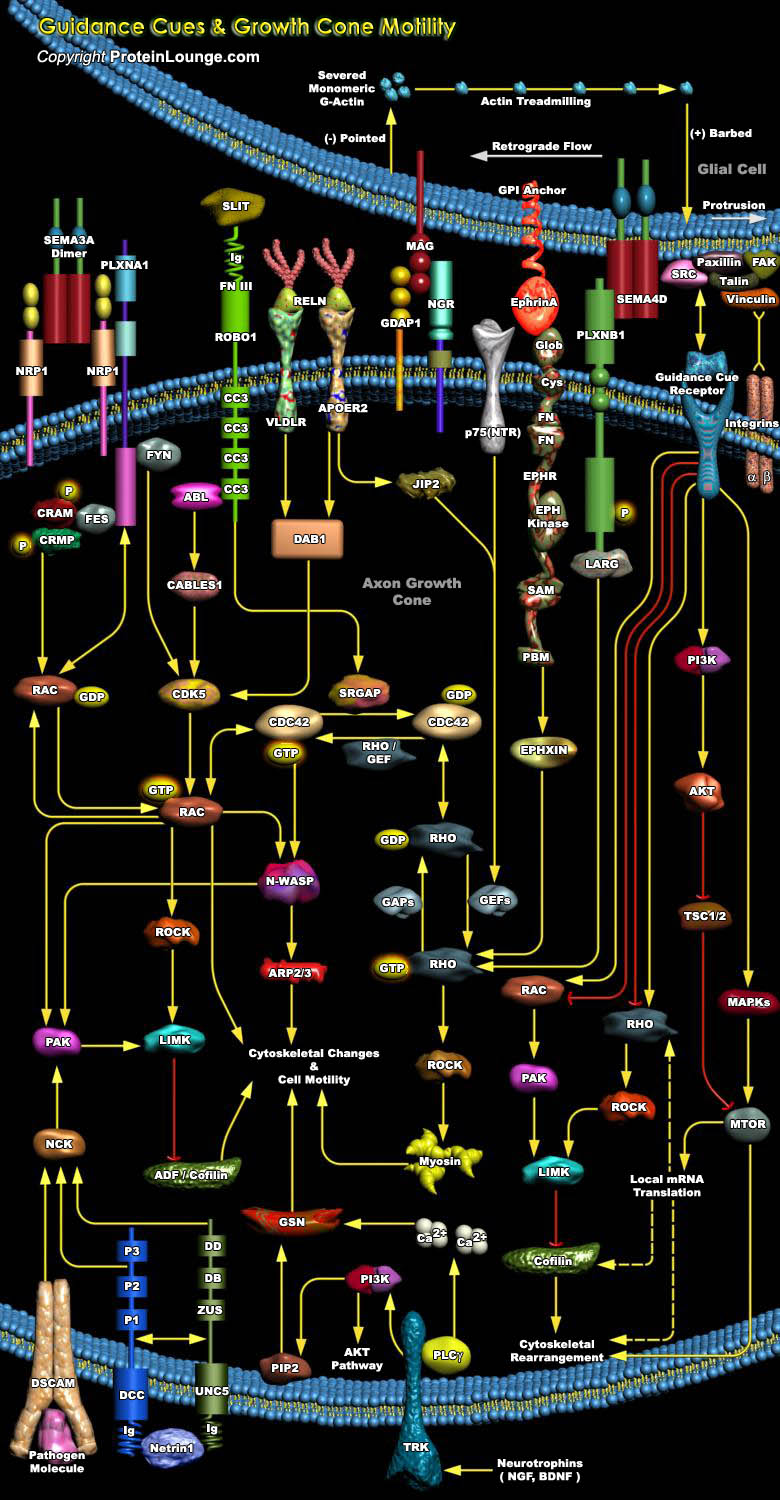
As an axon grows, the growth cone at its advancing edge encounters specific ‘choice points’ at which guidance cues steer specific axons towards their appropriate destinations. Such cues may attract a subset of axons towards a given domain, repel axons from inappropriate target regions or simply provide a permissive substrate for axonal outgrowth. There are many different ways in which a guidance signal might intervene to steer the growth cone. For example, a guidance cue might promote the initiation, extension, stabilization, or retraction of individual filopodia, or the capture or stabilization of microtubules in specific regions of the growth cone. In each of these cases, guidance signals must be relayed through the growth cone to the actin cytoskeleton,[..]
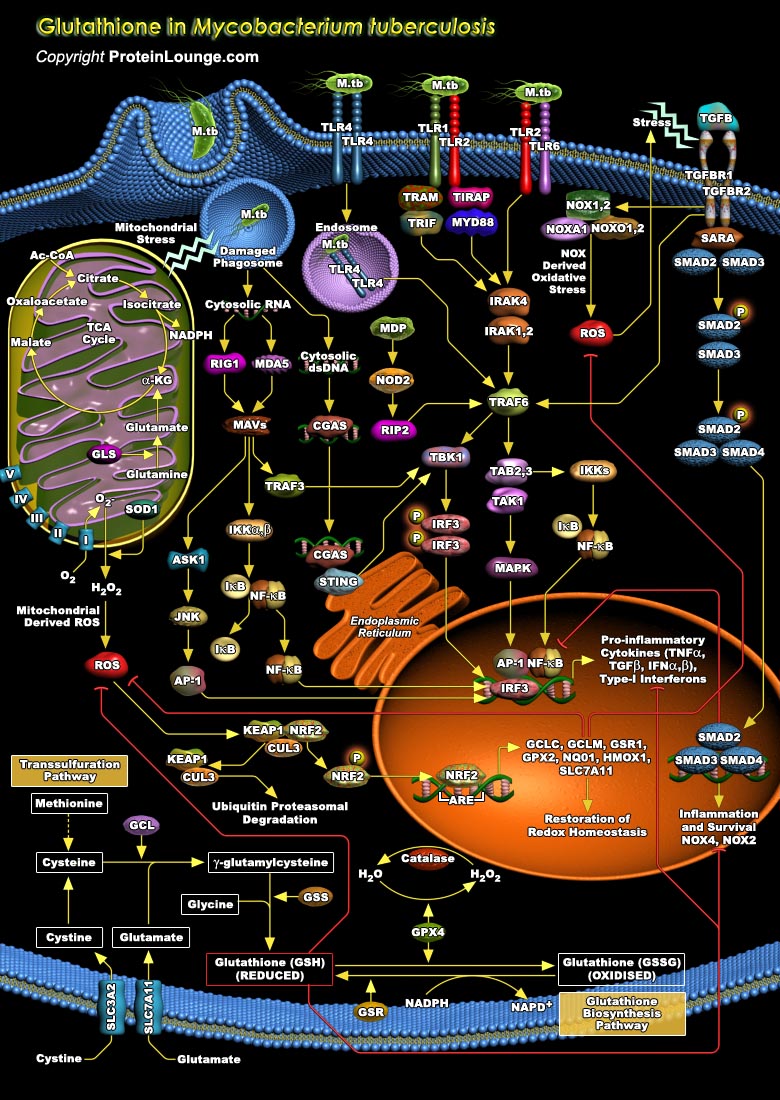
Tuberculosis (TB) is the leading bacterial cause of death worldwide. The causative agent for causing TB is Mycobacterium tuberculosis which is responsible for causing 8.8 million new cases of active disease and 1.6 million deaths per year. The first step in TB infection takes place with the internalization of the bacilli by alveolar macrophage followed by inhalation of droplets. Macrophages are phagocytic cells and acts as the first line of defense against microbial invasion. Since macrophages in the alveoli are the first cells to be exposed to the Mycobacterium they get infected first. Activation of macrophages leads to the production of several antimicrobial molecules involved in combating intracellular mycobacterial infection including ROS and[..]

